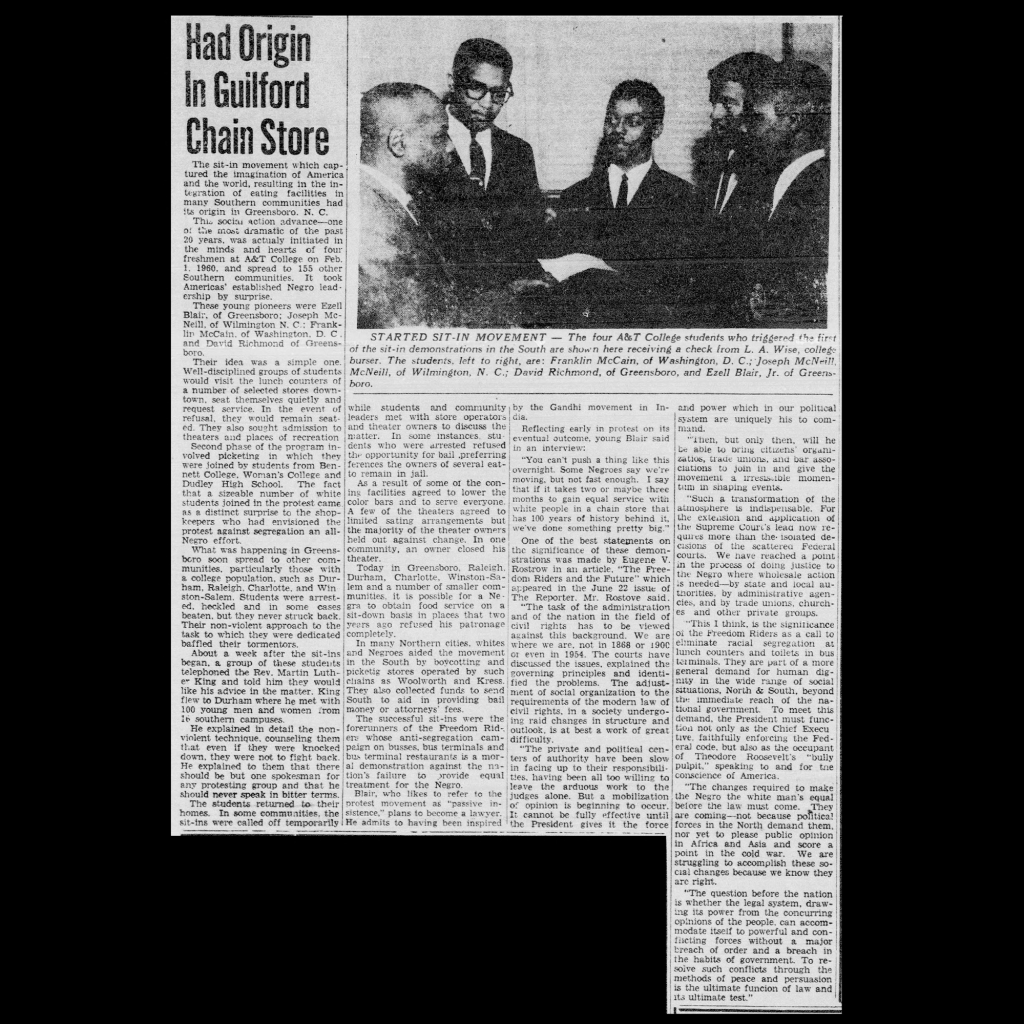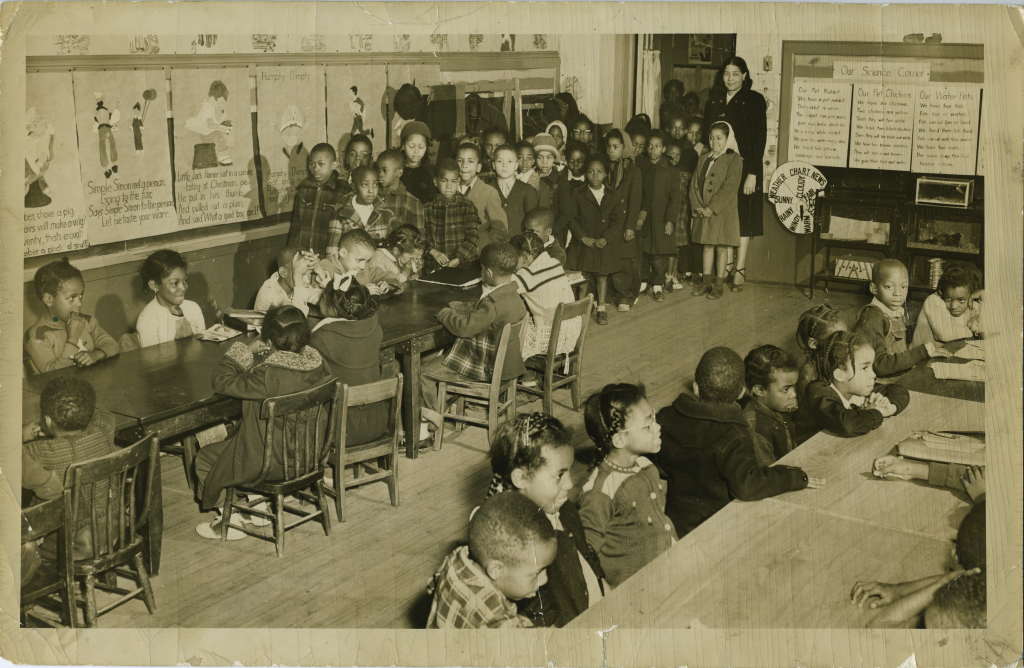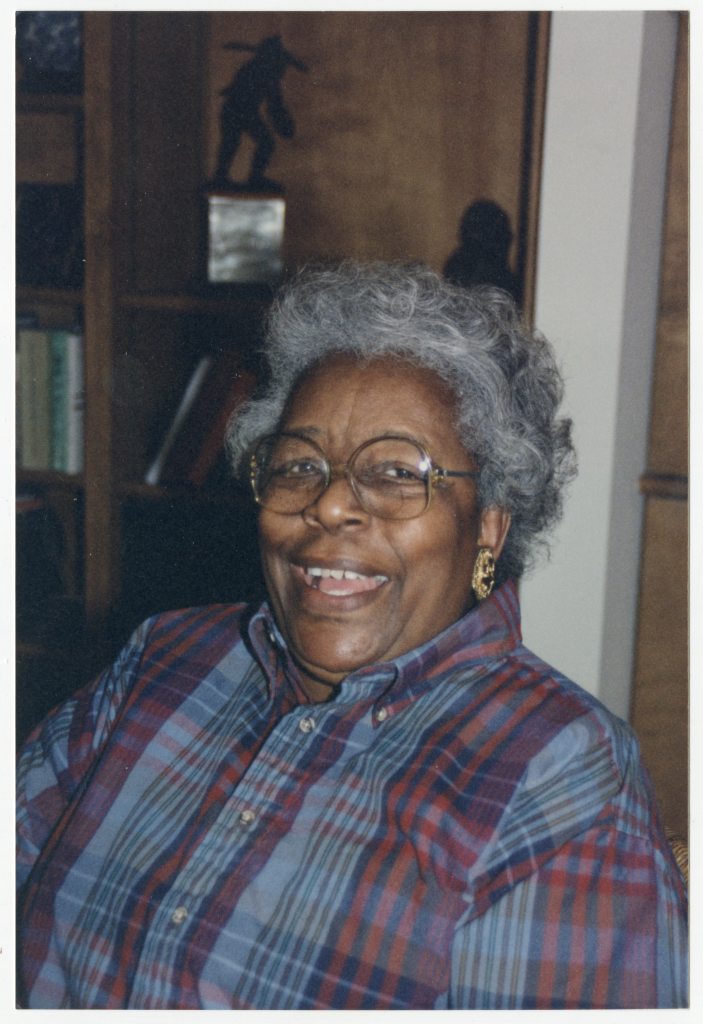Summary
Introduction of new primary source sets on Jim Crow and the Civil Rights Movement in North Carolina.

In addition to our recently developed WWII primary source sets, we are introducing two sets on the history of Jim Crow in North Carolina and a set centering on the community organizing in response to this racial oppression. Included in the source sets are 15 primary sources to explore, along with various discussion questions to kick start an analysis of the sources and additional resources related to the sets. These sets feature a variety of materials, including newspapers, photographs, oral histories, and films, among others.
The set also provides general background information on the history that led to the Jim Crow era of the South and a brief review of this time in history and the legacy of organizing for racial justice. Each primary source has received a brief context statement, some including links to learn further about specific events or people mentioned in the primary source. The sources can be arranged on a timeline with additional dates of major events mentioned in the background information and that were impactful for North Carolinians in relation to Jim Crow, Southern organizing, and life in North Carolina. Due to this, there is harmful and disturbing content and references to racial violence in these sources, please proceed with care when examining sources and see DigitalNC’s Harmful Content statement for further information. Below are brief description of each primary source set in this series.

Jim Crow South: Life in North Carolina Post Civil War-1930’s
This set covers the realities of life in North Carolina post-Civil War as the area transitioned from the Reconstruction Era to the Jim Crow South period. While the time post-Civil War did see some social progress, it also saw the rise of white supremacist groups and quickly building racial violence in response to the beginning of an integrated society. A stark example of this is Wilmington Massacre, extreme acts of white supremacist violence upon the Wilmington community in response to a newly elected interracial town government. This set features reports from historically Black newspapers, white-run newspapers, photographs, a scrapbook, and a poll tax receipt to show the lives and beliefs of people in North Carolina during the beginning of Jim Crow to the 1930’s.

Jim Crow South: Life in North Carolina 1930’s-1950’s
A collection of photographs, newspaper articles, oral histories, a book, and blueprints show how Jim Crow operated in North Carolina during the 1930’s-1950’s. In addition to historically Black newspapers, this set provides records of segregationist efforts to divide public spaces, like with the park now known as the William B. Umstead State Park. Thew two oral histories included in this set describe the lives of people who lived through Jim Crow and they help us to remember the individual impacts of these racist policies and racial violences. They also describe how communities came together to withstand and push back during these times.
![People are shown marching together as a demonstration in the street, in front of a public building. Signs are shown that read ‘Join our March For Freedom’ and ‘Black and W[hite] Together.’ Protesters are wearing business attire and coats.](https://www.digitalnc.org/wp-content/uploads/2024/10/wsaaa_civilrights_DSC01782-1024x694.jpg)
The Southern Freedom Movement: The Effort for Civil Rights in North Carolina
While the other source sets describe efforts during their time period for organizing against Jim Crow, this set focuses its attention on understanding the Civil Rights Movement in the context of the Southern Freedom Movement in North Carolina during the mid-1950’s to the early 2000’s. While many people think of the Civil Rights Movement as officially concluded, these efforts were part of a broader social movement for racial, economic, and social justice in the South, and that social movement continues to organize against white supremacy and racial violence today. This set includes videotapes, newspaper articles, photographs, oral histories, and a presentation on the conditions of this time, the individuals and organizations working for racial justice, and the legacy of these efforts. It also covers how Black liberation movements connect to other oppressed groups and social justice movements, like Indigenous communities and anti-war movements.
These primary source sets can be found on our resources page, along with our other primary sources sets and resources for teaching with primary sources, managing digital collections, and contributing materials to DigitalNC. Feedback on these primary source set can be submitted through our contact form.
